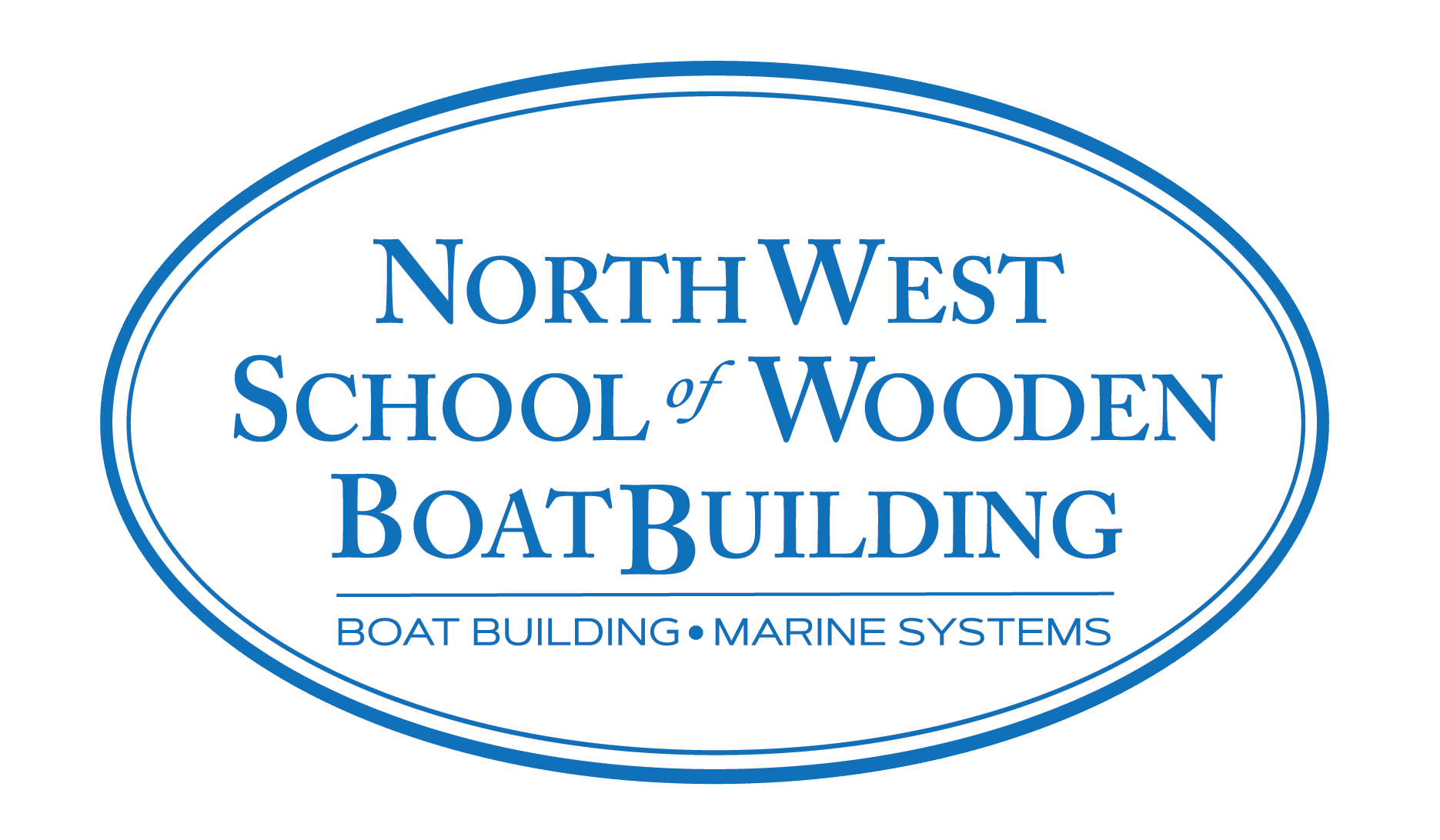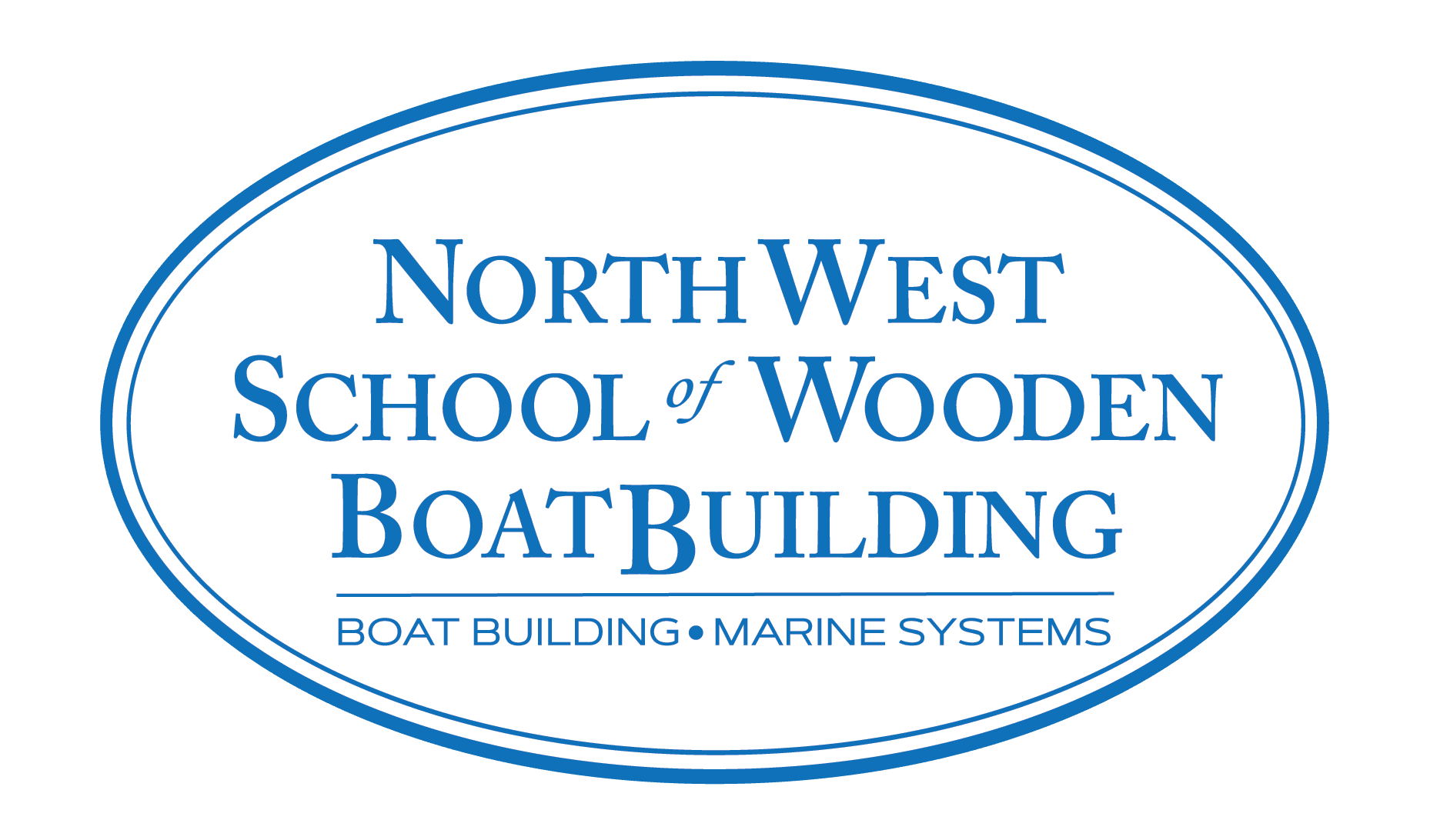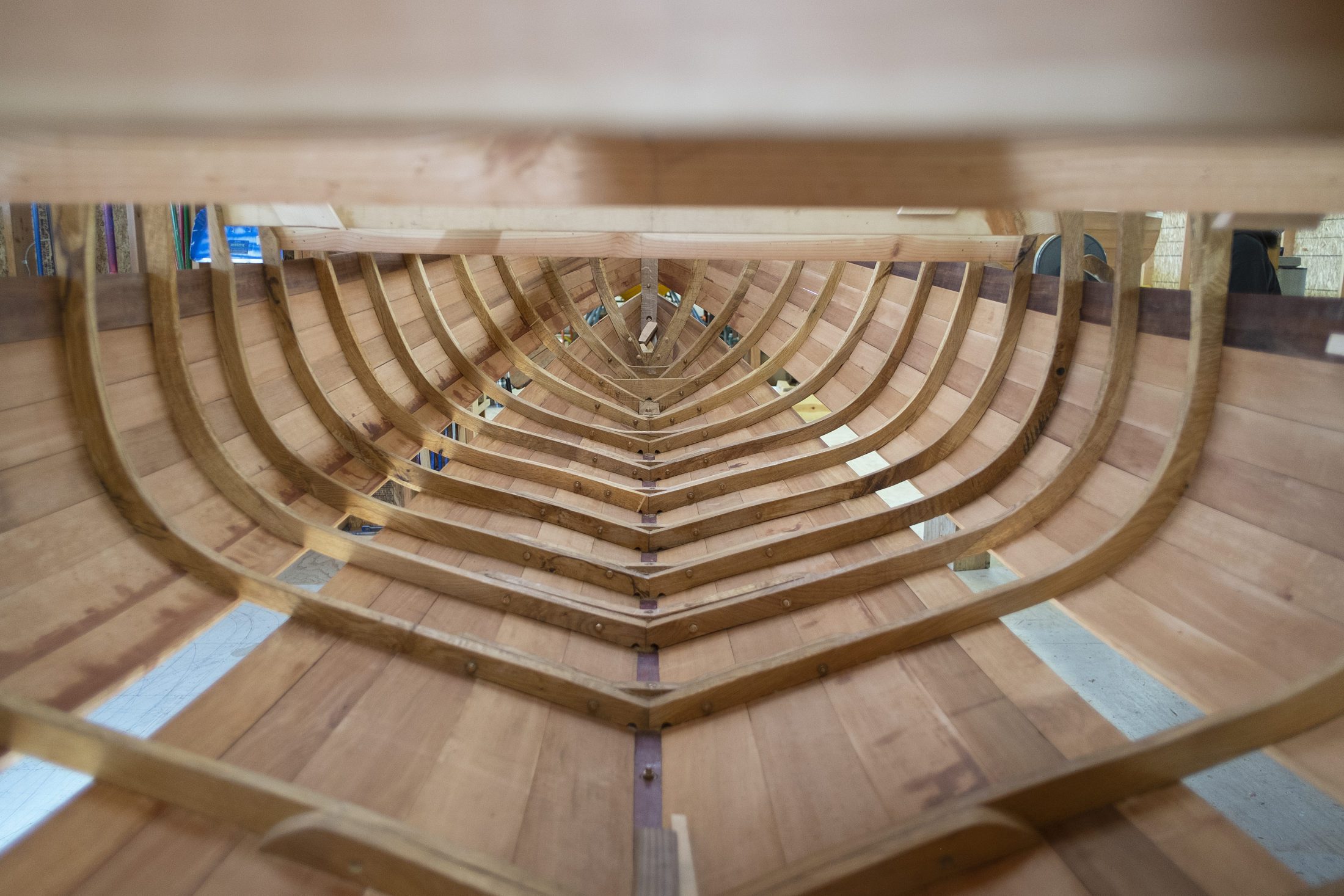
STATE OF THE CRAFT
Boatbuilders on Boatbuilding
Hull Raiser Magazine: Fall 2022
“After all this time, I still find myself looking at boat plans, dreaming about building this boat or that boat, and looking at how different boats are constructed whether I’m at the dock, the yard, or here at the school,” says Chief Instructor Sean Koomen. “It’s a gift that we get to build different boats all the time as part of the curriculum. The learning is endless — for the instructors as well as for the students.”
Boatbuilding Instructor Tucker Piontek agrees. “You don’t get into this industry because you have a dry technical interest in boats. “We like to get our hands dirty. We like figuring out how things fit together. Go to the Pourhouse in Port Townsend on a Friday night and you’ll find all these shipwrights talking about boats. We’ve spent the last 40 or 60 hours banging our heads into them, and we’re still talking about boats.”
This year students have been working on a wide variety of builds including a 26’ Nordic Folkboat, a 24’ troller, a 15’ cold-molded Marsh Cat, a 13’ traditional Susie Cat, a carvel plank-on-frame Abaco Dinghy, a 12’ Piccolo sailing canoe, a Rangeley Guideboat, and three skiffs.
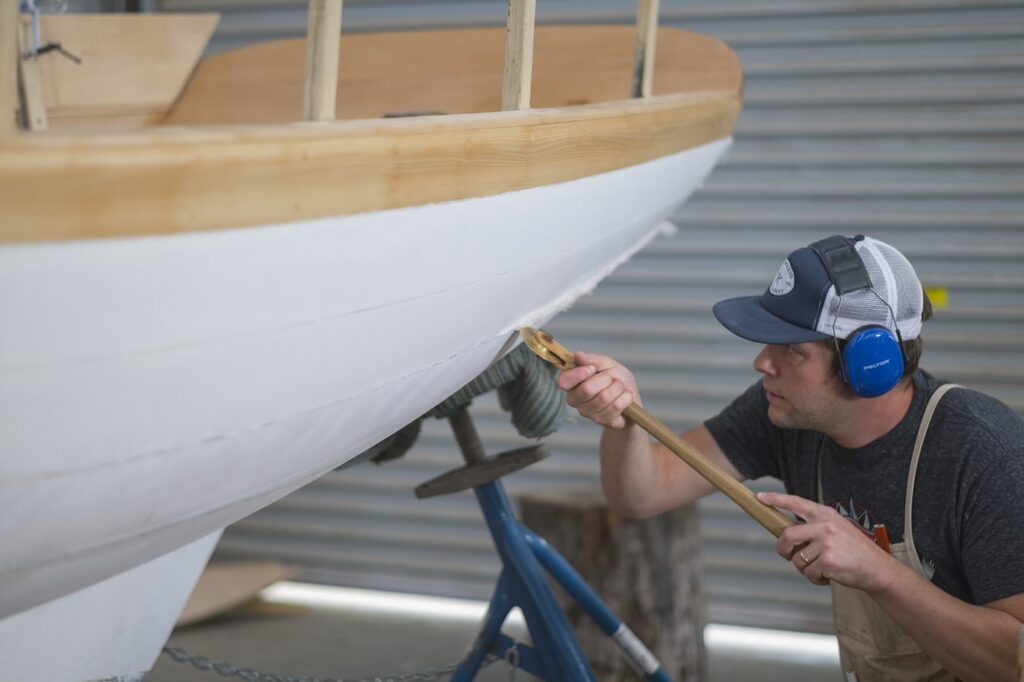
All of our current boatbuilding instructors are graduates of the Boat School who honed their experience in the yard and custom boat shops. Here’s how they’re using boatbuilding projects to teach craftsmanship and prepare students for careers in the trade.
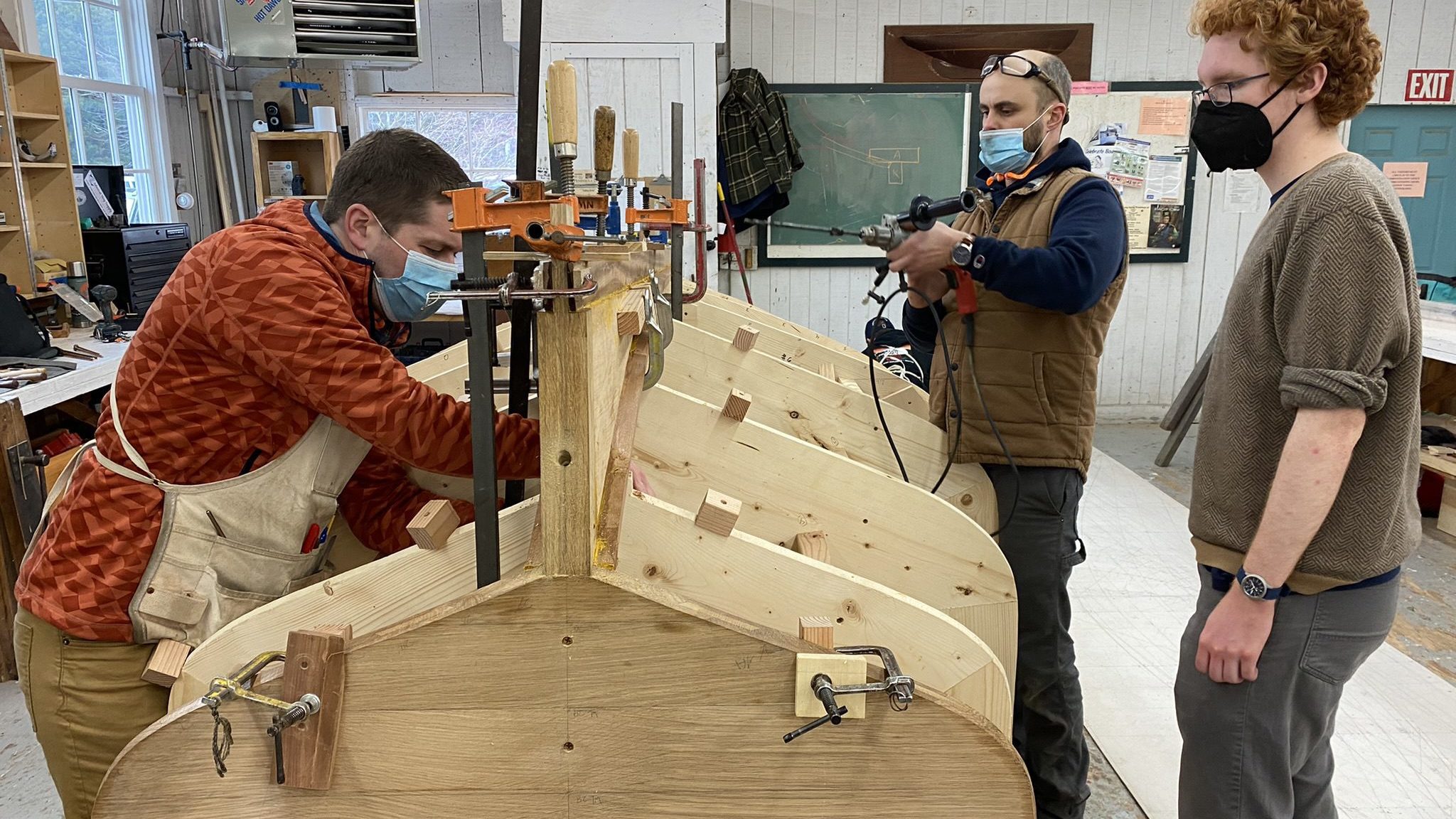
BRUCE

Bruce Blatchley graduated from NWSWB in 1997, honed his boatbuilding skills at Port Townsend’s Baird Boat Co. (now Haven Boatworks), and became a Boat School instructor in 2006. Since then, he has guided students through dozens of challenging and innovative builds, including construction of Clean Bay, an electric-solar workboat launched in 2021; the cold-molded hull of a human-powered submarine for the University of Washington engineering team that made its racing debut at the International Human- powered Submarine Races in 2017; and the Bob Perry-designed 62-foot yacht Sliver, launched in 2014.
This year Bruce is guiding students through construction of a 15’ cold-molded Marsh Cat designed by Joel White. “Joel White is one of my favorite designers,” says Bruce. “I’ve probably built more boats to his designs than any other designer, but this particular design was brand new to me. I get to do all the problem solving along with the students and all of that to me is intriguing.”
“What I do in the shop on a daily basis is read the room, see how much input is required, and be where I need to be. Once the students get to a certain comfort level with the project, my goal is for us to work hard and have a good time. Yes, we’re doing some pretty complicated stuff. Yes, it’s serious, but it’s not that serious. The important part is the problem solving. That’s what they can take out in the world, whether they pursue a career in boatbuilding, fine furniture making, or anything else.”
Before becoming a boatbuilder, Bruce was a mountain guide on Denali in Alaska teaching climbing skills, crevasse rescue, and extreme weather survival skills. “I’m still being a guide,” he says. “I’m just not in the mountains anymore.”

LELAND
Leland Gibson graduated from NWSWB in 2007, worked as a boatbuilder at Haven Boatworks for 10 years, and became a boatbuilding instructor at NWSWB in 2017. “Teaching people how to build boats is very different from building or repairing boats yourself,” says Leland. “I’m a product of the Boat School. I believe in what the school is doing and being part of that is pretty exciting. Each boat and each group of students is unique. That definitely keeps things fresh and interesting — the excitement of the unknown.”

“Over the history of the program, we’ve built everything from 10’ skiffs to a 36’ motor sailer. That variety means we instructors get to work out how to build the boat alongside the students. They’re involved in the problem solving. That’s important because that’s a lot of what boatbuilding is — especially on repair and restoration projects.”
Students in Leland’s shop this year have been working on the new design and first-ever build of a 24’ double-ended troller, inspired by classic fishing boats of the Northwest, by east coast designer Jim Mattison. “It’s a good teaching boat because it has a little bit of everything in a relatively compact package. It’s got an engine and a full systems array. It’s got a well-thought-out interior and it’s got a pretty complicated super structure, consisting of pilot house and coach roof. Boats of this size are great because students get a well-rounded idea of how the whole boat goes together.”
A fun fact about Leland is that he and boatbuilding student Joel Arrington (class of 2019) rowed a school-built wherry in the 2nd annual Seventy48, a seventy-mile race of human-powered watercraft from Tacoma to Port Townsend. The ultimate sea trial! Out of 117 teams registered, Team NWSWB finished 13th.
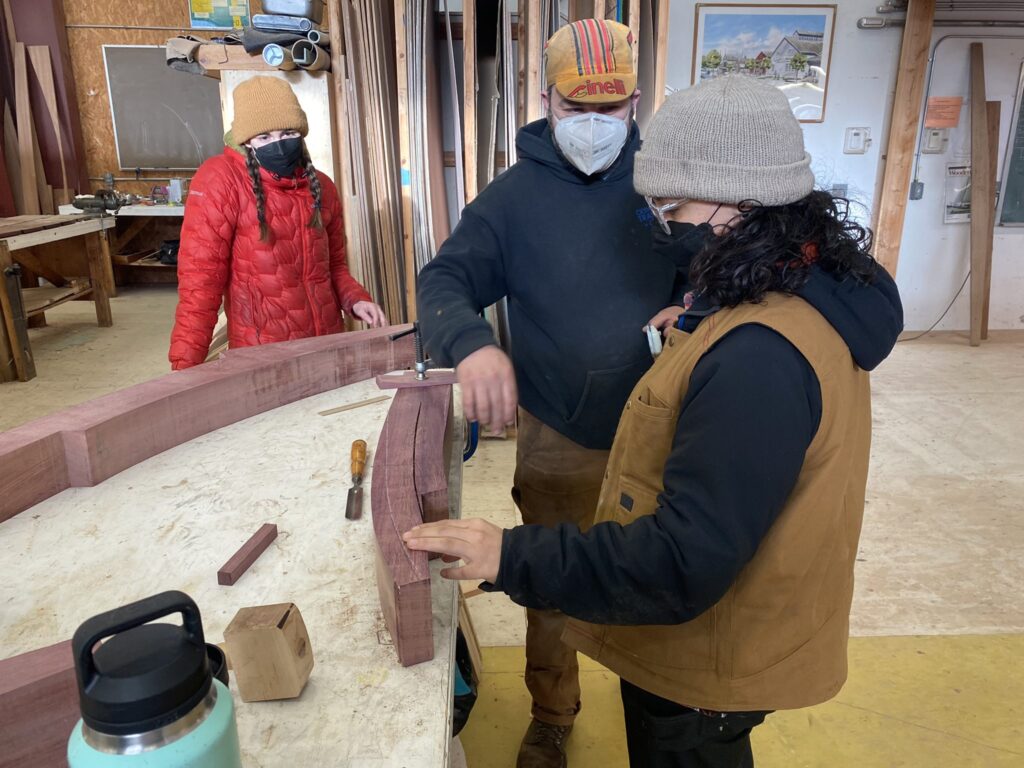
“This isn’t some mathematical science where you run the formula and it has the exact same answer every time. Students learn to trust what their hands and the wood are telling them.”
Tucker Piontek
TUCKER
Tucker Piontek’s interest in boats began with canoes and fishing boats on the rivers of Oregon and lakes of Wisconsin and then into racing modern sailboats on the Columbia River and ocean races along the Pacific Northwest and Canadian coastlines. A degree in Industrial Design took him into the architecture and stop- motion animation industries for the next decade.
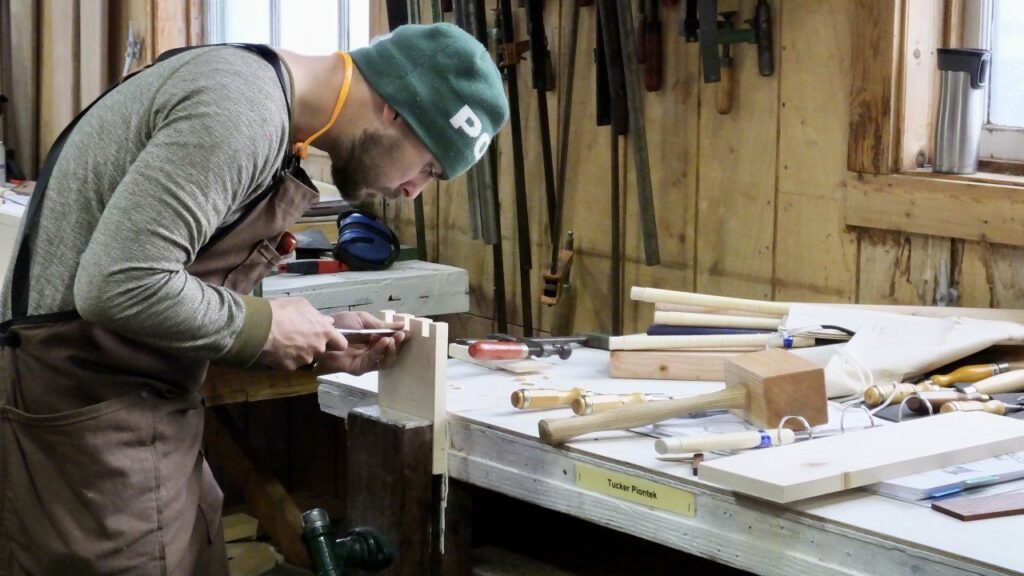
Attending NWSWB in 2016 led to a second career as a boatbuilder, first at Turn Point Design and later at Haven Boatworks. At Turn Point he had the opportunity to learn resin infusion techniques and composite mold-making on aerospace and marine products. At Haven Boatworks he worked on a range of classic yachts and historic vessels including the schooner Adventuress, motor yacht Thea Foss, and the MV Carlislie II ferry, the last of the working mosquito fleet of the Puget Sound.
As a boatbuilding instructor at NWSWB he’s co-leading construction of a Nordic Folkboat with legendary shipwright Ray Speck. “Anyone who gets to work with Ray is fortunate,” says Tucker. “He has a wealth of information and experience, especially with lapstrake construction, but he doesn’t pretend to have all the answers. That’s a great thing for students to see. This isn’t some mathematical science where you run the formula and it has the exact same answer every time. We’re teaching students how to think through problems. They aren’t just learning techniques. They’re learning to trust what their hands and the wood are telling them.”

KOREY

Korey Ruben graduated from the Boat School in 2014 and dove into carbon fiber composites at a start-up called Spindrift Rowing. He subsequently served as a boatbuilder at Haven Boatworks, where he worked on several notable northwest yachts including two Ted Geary-designed fantails, the 96’ 1928 MV Blue Peter, and the 120’ 1930 MV Thea Foss.
He views his time in the boatyard as a formative experience and aims to carry the love of problem solving and the yard’s work ethic into his teaching at NWSWB. “Taking on new challenges is a big part of learning,” says Korey. “You’re not going to be a master boatbuilder straight out of Boat School, but you can become a problem-solving assassin — someone who can go in there every day, stay calm, solve problems, and keep learning.”
His students are building a 13’6” Susie Cat, a beamy daysailer designed in the late 1800s by E. E. Swift. “When you have to torture the planking into a shape that is wide relative to its length, that’s a lot more challenging than planking a long narrow boat,” says Korey. “The students did a nice job.” Chief Instructor Sean Koomen guided students through the first part of the build, so Korey’s challenge, as a new boatbuilding instructor, was to pick up where he left off — ensuring that each student gets to practice every core competency while delivering a beautifully seaworthy final product.
“The Boat School does a great job of replicating a yard environment in the way builds are organized, but we don’t have the same ‘produce, produce, produce’ mentality,” says Korey. Our most important product is the learning. Students have the opportunity to try things until they truly get it.”

